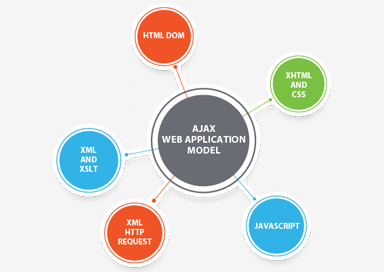What is the full form of AJAXAJAX: Asynchronous JavaScript and XMLAJAX stands for Asynchronous JavaScript and XML. It is not a technology but a group of technologies. It uses many web technologies to create a set of web Development techniques. It works on the client side to create asynchronous web applications. With the help of AJAX, we can send and retrieve the data from a server asynchronously (in the background) i.e. without disturbing the existing page on display. 
HistoryEarlier all the websites were made only with HTML. They were difficult to use as they took a lot of time to reload the page every time. In 1996, the Iframe tag was introduced by Internet Explorer. The term "Ajax" was publicly stated on 18th February 2005 by Jesse James Garrett in an article titled "Ajax: A New Approach To Web Applications". Technologies used
Drawbacks
How Asynchronous JavaScript and XML worksIt is crucial to keep in mind that AJAX comprises two essential components: the online browser and the web server, in order to comprehend how it functions. Classical web applications also employ synchronous requests to send and receive data to and from the web server, sending the user to a new page with updated data from the server. The user presses the submit button while using AJAX, and JavaScript sends the request to the server, interprets the replies, and asynchronously updates the browser's view (or takes some other action). This is how the procedure goes:
AJAX engines and AJAX appsWithout the need to install any plugins, AJAX apps run directly in a web browser. XML is typically used by these apps to transfer data. But they can also deliver plain-text or JSON text data. Applications using AJAX make use of an engine that stands between a user's browser and the server being queried for data. As a result, the browser loads the engine rather than a standard webpage, which the engine then shows to the user. The engine keeps running in the background and communicates with the browser via JavaScript. Any user action, such as clicking anywhere on the website, causes the engine to be called in JavaScript and normally answers right away. If the engine needs more information, it updates the page while also requesting it from the server, typically using XML. Benefits of asynchronous JavaScript and XMLThe following are some major benefits of AJAX:
Next TopicFull Form
|
 For Videos Join Our Youtube Channel: Join Now
For Videos Join Our Youtube Channel: Join Now
Feedback
- Send your Feedback to [email protected]
Help Others, Please Share










